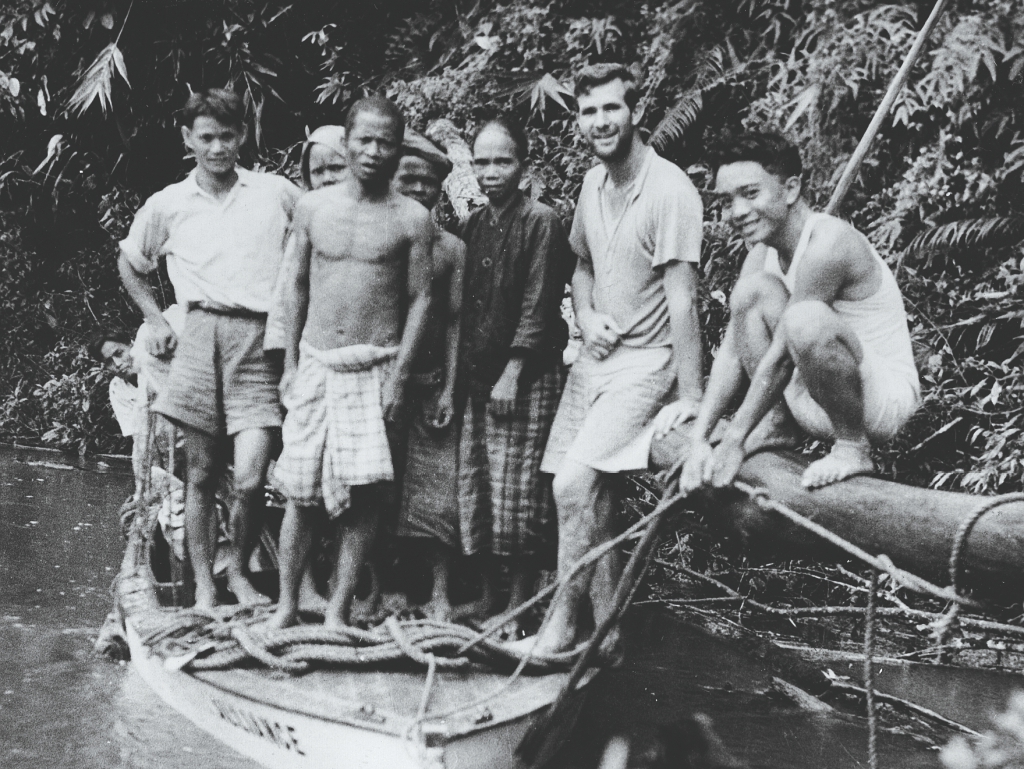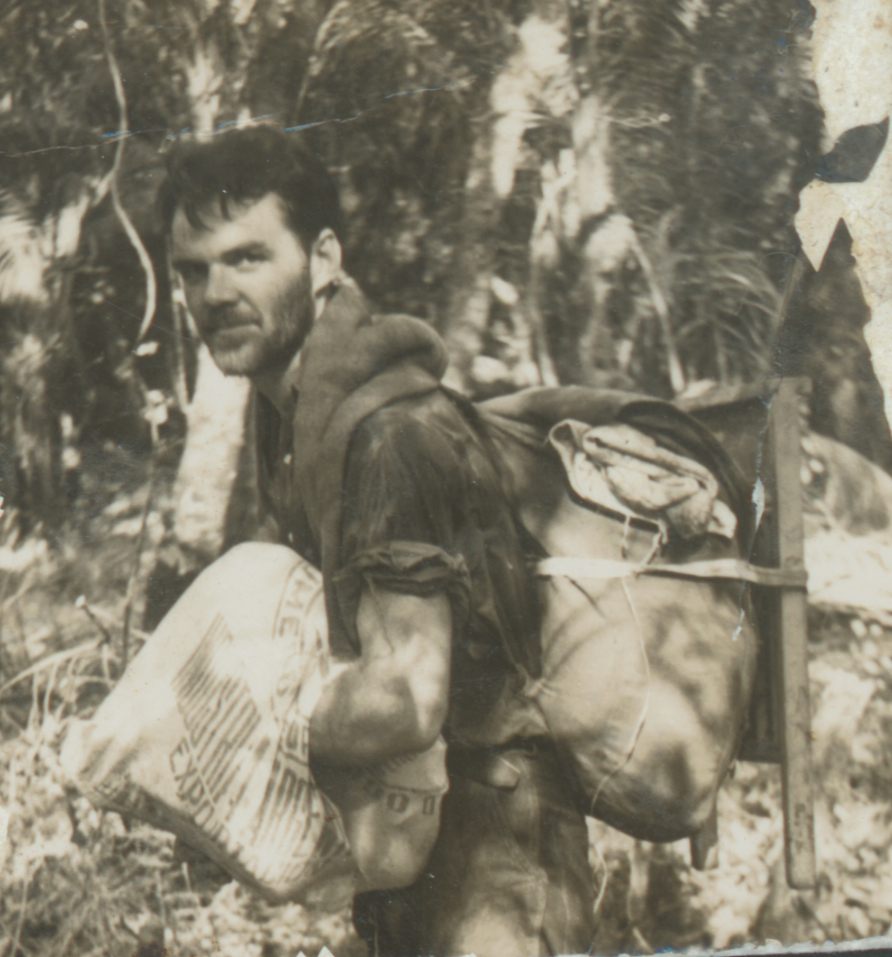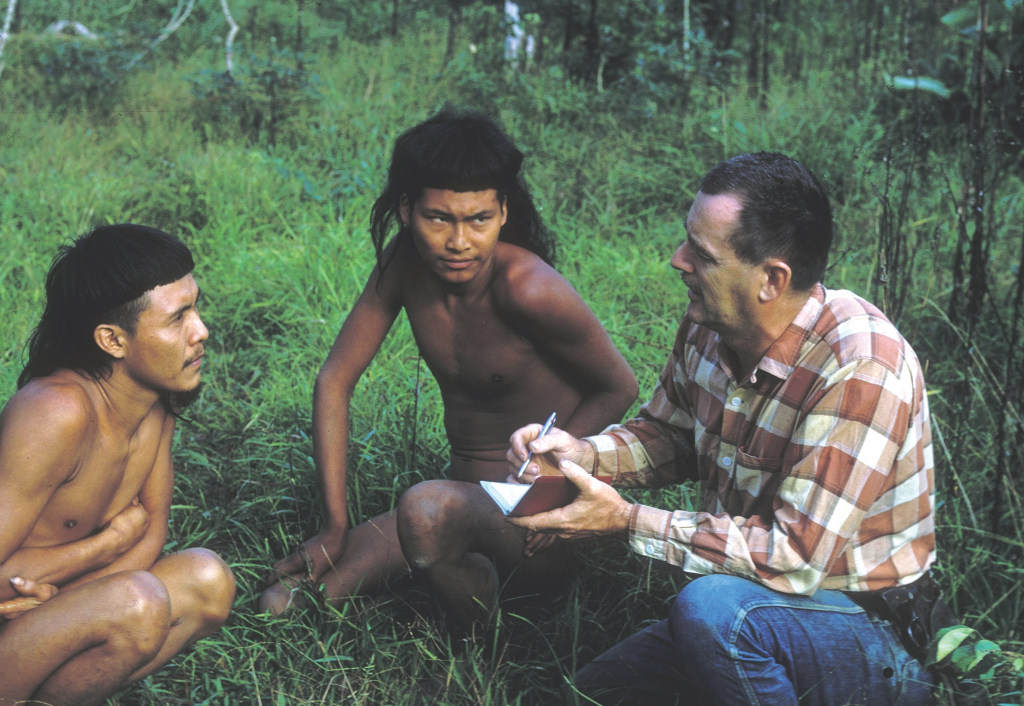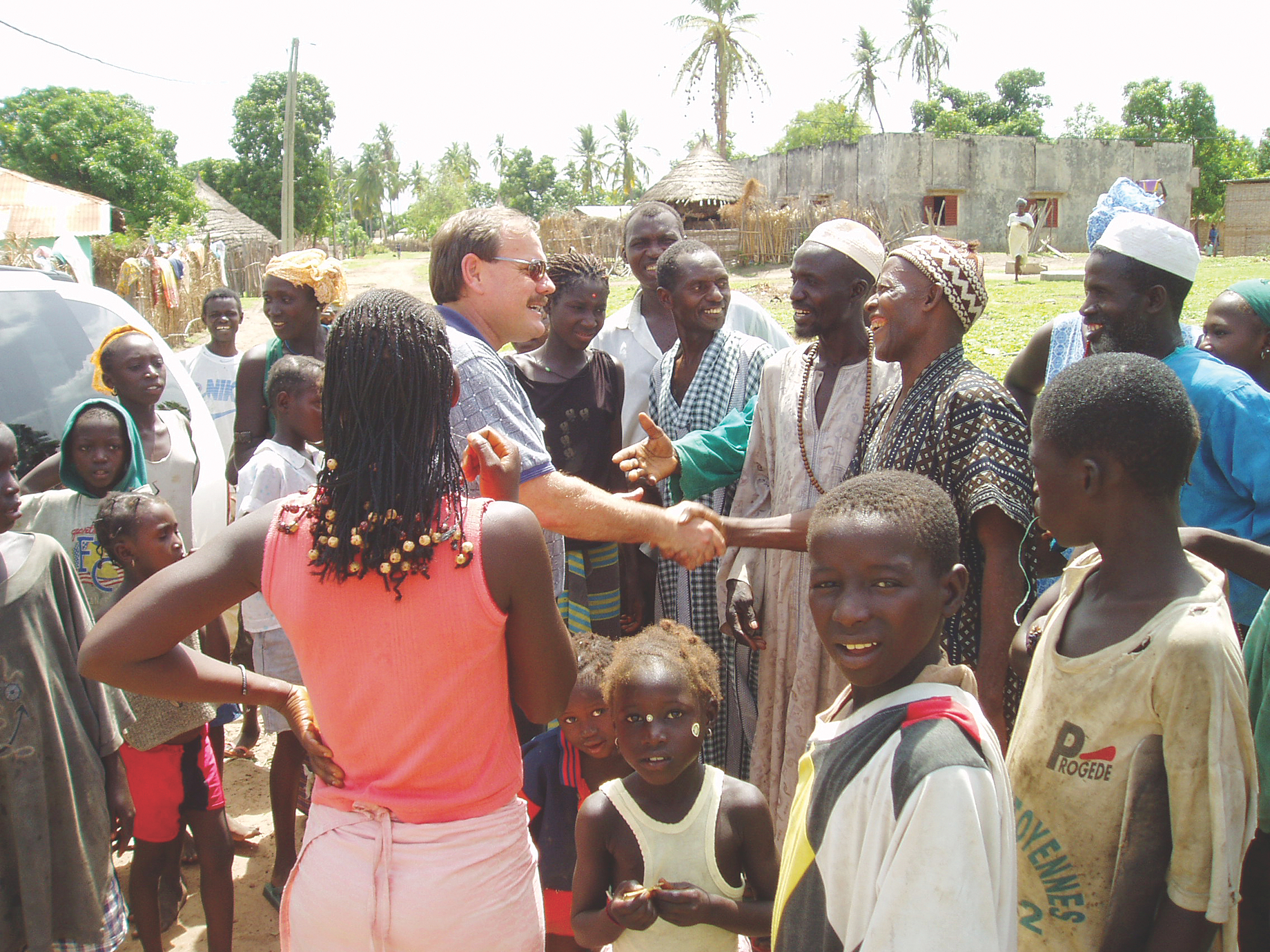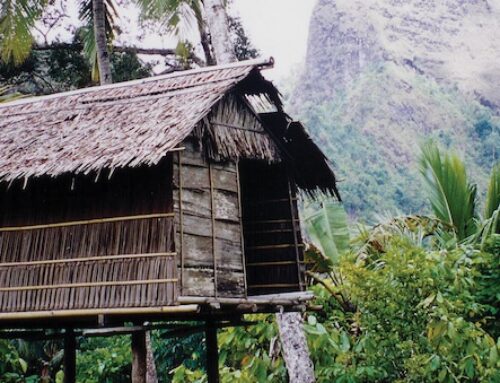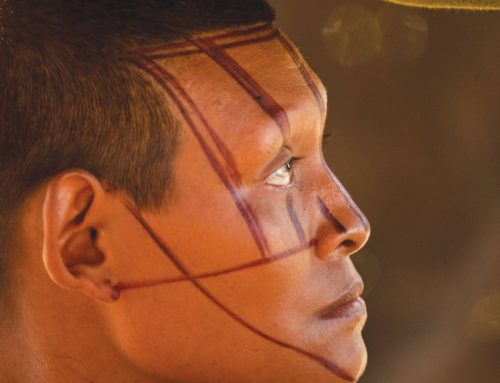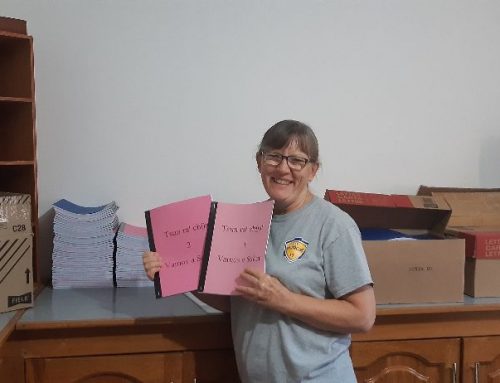The customs official warily scrutinized the boisterous group of seven fresh-faced young men standing before him — and the array of musical instruments they wanted to bring into Latin America.
What were these gringos up to?
In her book God Planted Five Seeds, Jean Dye Johnson recounts the ensuing conversation between the suspicious official and Joe Moreno—the only one of the group who could speak Spanish.
“What are you then, señores? A band?”
“No señor, not a band.”
“An orchestra, then?”
“No señor, not an orchestra,” said Joe. “We are missionaries.”
The official’s black eyebrows shot up in astonishment.
“Missionaries? But you do not look like missionaries. You look more like football players.”
Joe translated the comment to his companions and they all grinned.
The official was not amused.
“Since you are not an orchestra and not a band, I cannot dismiss the possibility that you have brought these instruments into the country to sell them.”
They were at an impasse until the customs official had a bright idea. They could prove the trombone, mellophone, two accordions, guitar, trumpet and cornet were for their personal use by playing something. The eager young men struck up a rousing hymn that quickly drew a crowd. Alarmed, the official let them go right away.
So began the 1942 journey of the first NTM missionaries into Bolivia’s “Green Hell” — the vast carpet of relatively unknown jungle stretching eastward from the base of the Andes Mountains.
But why? Why of all the places in the world did these seven young men choose to go there? Didn’t they have better places to go and better things to do? Why go to a jungle?
Because of a simple yet powerful vision.
The Vision Some Called Crazy
Founders Paul Fleming and Cecil Dye birthed the vision of New Tribes Mission — to reach the last tribe for Christ in their generation. That meant going to the most remote people groups, those previously unknown to the outside world and with a never-before documented culture, language and belief system. It meant becoming an advocate for those who had no opportunity to pick up a Bible, turn on a radio or TV or drive to a nearby church — because those things didn’t exist for them yet. It meant taking the gospel to those who had no hope of hearing it unless someone would go and tell them.
That vision found a home in seven young hearts. If the goal was to reach the last tribe, someone had to be willing to go and reach the first one. So they said goodbye to everything dear and left their 1942 world behind — a world just as real for them as ours is to us.
When their plane took off that late November day, it was the same year Muhammad Ali, Roger Staubach, Harrison Ford and Joe Biden were born. Corn dogs and Milky Ways were the new favorite munchies of the day and the novel invention of duct tape would soon be on the shelves. Hugely popular pastimes included Saint Louis Cardinals games, Abbott and Costello routines, the recently released films Casablanca and Bambi, as well as Bing Crosby crooning the chart-topper “White Christmas.”
Yet it wasn’t only pleasant realities they were leaving behind.
Probably the hardest challenge of all for the young men, and one which they received serious criticism for, was choosing to leave the very real fighting of World War II to someone else. But these were not irresponsible, cowardly boys. They wanted to engage in battle — a raging spiritual one. As many before them, including the first disciples and the Apostle Paul himself, they wanted to give their lives for something they truly believed in, whether the world, or even other believers, approved or not.
So with the vision planted deeply in their hearts, they moved forward to take the gospel of Jesus Christ to one of the darkest places in the world, whatever the cost.
And for five of the men, it cost dearly. They lost their lives at the hands of the Ayoré people they were trying to reach.
The Vision Refuses to Die
But the vision they believed in didn’t die. Their martyrdom breathed new life and passion into the hearts of others to go as well. Eventually, a church was established among the Ayoré people group, and some who had participated in the killings came to know the Lord themselves.
Once again, even death couldn’t thwart God’s plans.
What began as seven young men dragging their instruments through an airport has become 3,200 strong, carrying the vision on. NTM missionaries now work in Africa, Latin America and the Asia-Pacific region, live among 245 different tribes, translate Scripture in more than 100 languages and reach a new tribe with the Gospel every 45 days.
The truth is setting tribal people free.
However, the vision itself was not accomplished. Though faithful missionaries in the last generation gave their hearts and souls and, in some cases, even their lives in pursuit of the goal, reaching the last tribe for Christ didn’t happen.
So what hindered the progress?
Everything about it was hard. It was hard to get there, hard to live there, hard to love the people found there…
The Vision Faces Reality
As we’ve all discovered at some point in our lives, everything appears much smaller from a distance. From an airplane, trees look like bite-sized broccoli and cars shoot along like ants on caffeine. But come in for a landing and true proportions take shape.
As the task of reaching tribal people began in earnest and missionaries came up-close and personal with the reality of the situation, it was clear there were many more people groups throughout the world than previously thought, and hence, a bigger and more time-consuming job.
Along the same lines, the work of tribal church planting was found to be much more difficult than initially expected. As with our own ventures, what can seem like a doable project at the beginning, on closer examination, often turns out to have unknown facets which complicate matters. Reaching tribal people proved to be an “over the top” and “out of the box” massively challenging experience. Everything about it was hard. It was hard to get there, hard to live there, hard to love the people found there, very hard to learn and understand the tribal cultures, languages and animistic belief systems, and particularly hard to stay there for the long years it took to establish a maturing tribal church.
Not impossible, just extremely hard.
And so was the progress.
But probably the most significant hindrance to reaching the last tribe for Christ was the same problem that Jesus mentioned in His day.
The Vision Requires Laborers
“The harvest truly is plentiful, but the laborers are few.” Matthew 9:37
While the pool of those willing to be missionaries was already small, those willing to go into tribal areas was fewer still.
And it remains the case today.
Dozens of people groups (representing roughly 10 million people) have asked New Tribes Mission to bring them God’s Word, yet they’re still waiting for available missionaries. There are simply not enough laborers to go around.
Yet even as the enemy desperately flails about, managing to get off a few rounds here and there as he fights his losing battle, all his hindrances ultimately have no power to stop God’s plans.
While progress may have slowed, it never died. And neither did the vision.
With renewed determination and zeal, the newly restated vision and goal of NTM as we move forward is the same as the original — to reach the last tribe for Christ in this generation.
But with one-third of the world’s people groups still unreached—representing millions of tribal people—is it even possible?
Surprisingly, the goal is actually realistic today.
The Vision is Doable Now
Over the years since the first missionaries, valuable tools, techniques and training have been developed and proven highly effective in tribal church planting around the world. Also, missionaries now have the incredible power of computers and up-to-date software and technology available to them which those before us didn’t. But perhaps the most effective tool we have at our disposal today is the eagerness of both national and tribal believers to be trained and mentored through the process of establishing mature churches among their own people—and they’re asking NTM to be the catalyst to do it.
It’s already happening in Papua New Guinea. The Mouk tribe is now reaching the Lusi tribe and also the Kove tribe. The Ata tribe is now reaching the Mamusi tribe. And those are only to name a few.
The combination of these important factors makes the vision of reaching the last tribe for Christ in this generation more doable now than ever.
However, Romans 10:15 says, “How shall they preach, except they are sent?”
The Vision Comes with a Catch
All the tools in the box are useless without two groups of people willing to make them work:
• Those individuals willing to go and be the mouthpieces and those willing to go and be the manpower behind the mouthpieces.
• Those individuals and churches willing to disciple, mentor and eventually send both the mouthpieces and the manpower into the world and in addition, send abundant support and resources, including prayer, to assure their needs are amply met so they can focus on the job for the duration.
There is no third category for believers.
Like inhaling and exhaling, the goers and the senders are equally necessary to breathe the life-giving truth of God’s Word around the world. If we as the body of Christ commit to freely go and freely send, the vision will become not only doable, but unstoppable.
Because Jesus broke through the chains of death and hell that victorious resurrection day long ago, breaking through the remaining barriers of worldview, culture, language, geography and politics in tribe after tribe around the world—in this generation — is very possible with God.
Acts 1:8 says, “But you shall receive power when the Holy Spirit has come upon you; and you shall be witnesses to Me in Jerusalem, and in all Judea and Samaria and to the end of the earth.”
Whether we’re in our 20s or in our 70s, if we’re still breathing, we are His witnesses — both as goers and senders — for this generation. God wants to use us, the global body of Christ, in the power of His Spirit, to spread the message of Jesus Christ to the ends of the earth.
But reading this magazine won’t get the job done.
Doing something will.
In 1942, seven fresh-faced young men plunged into the jungle — and the first tribe came to Christ.
Have you thought seriously about the part you can play?
Plunge in today.
Somewhere out there in the world the last tribe is waiting …



